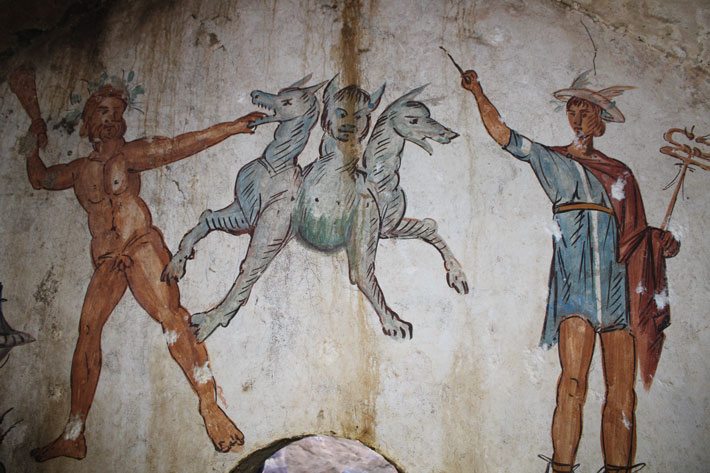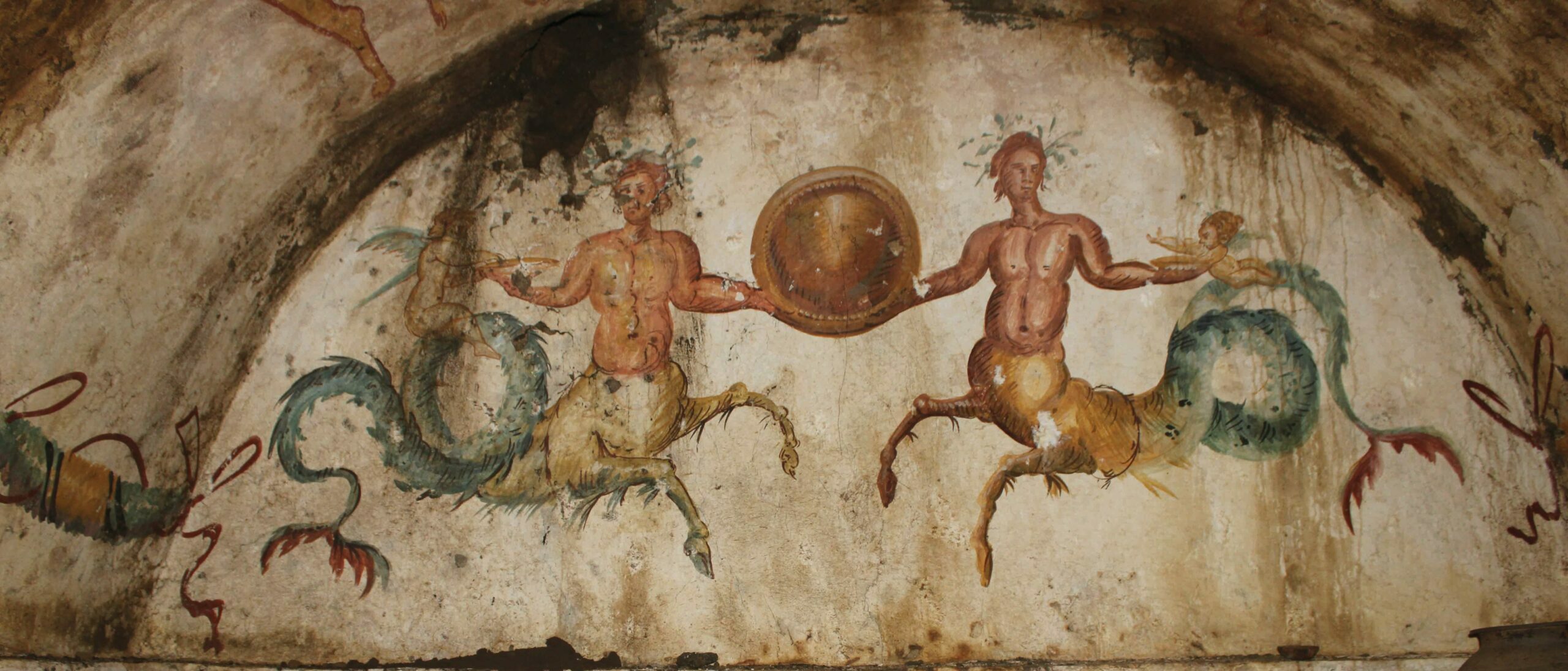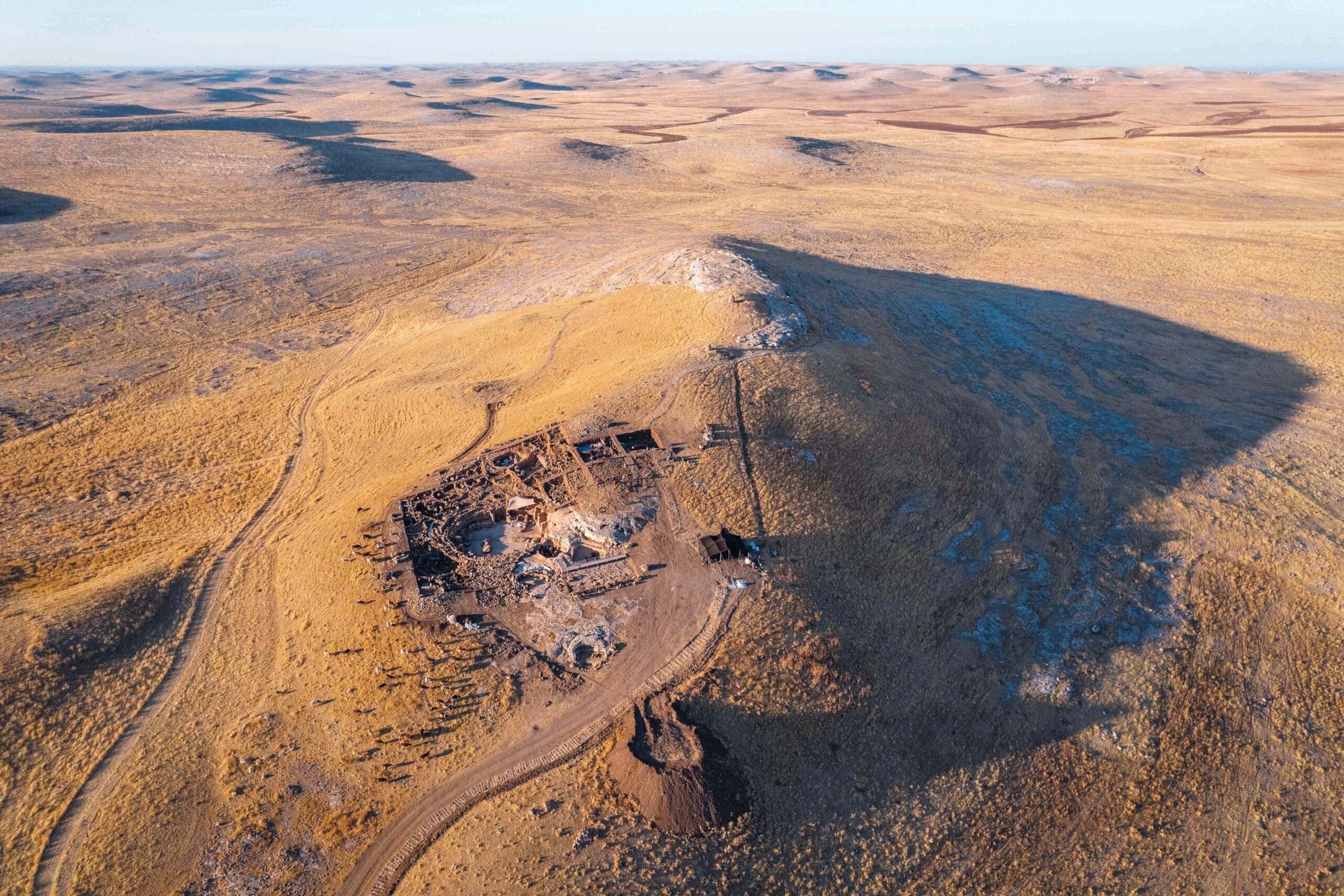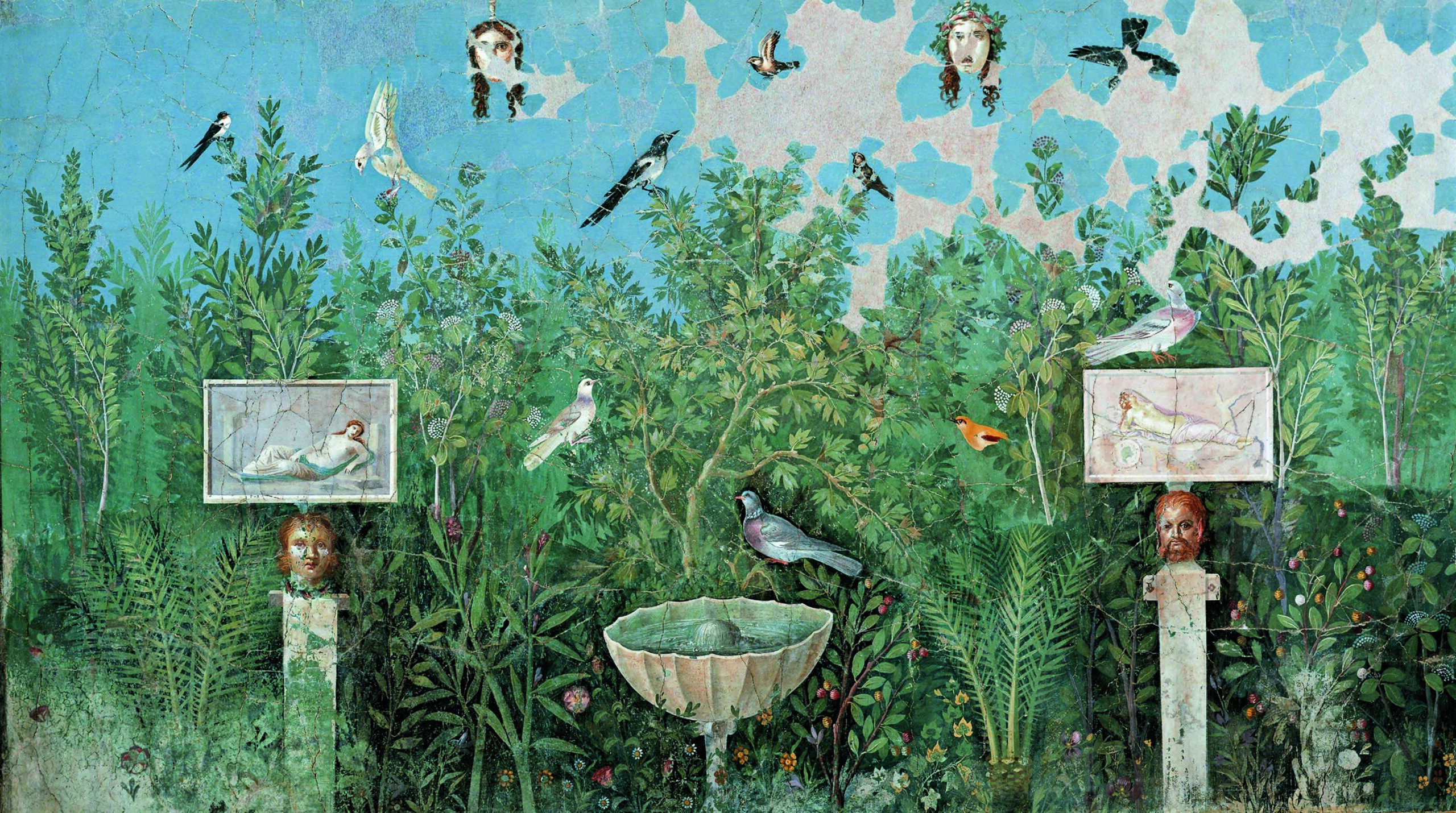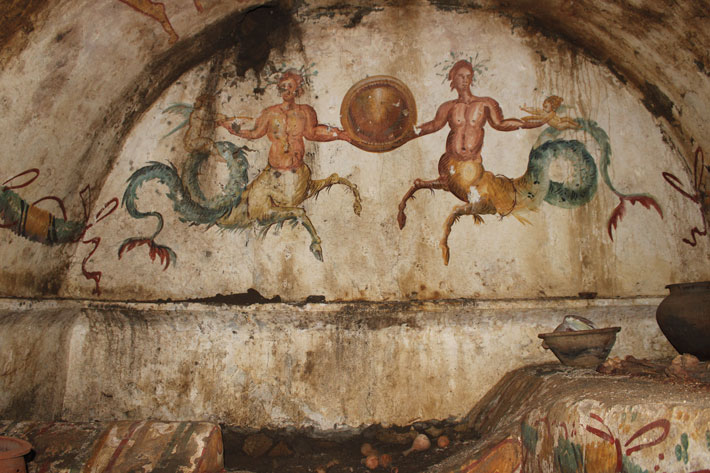
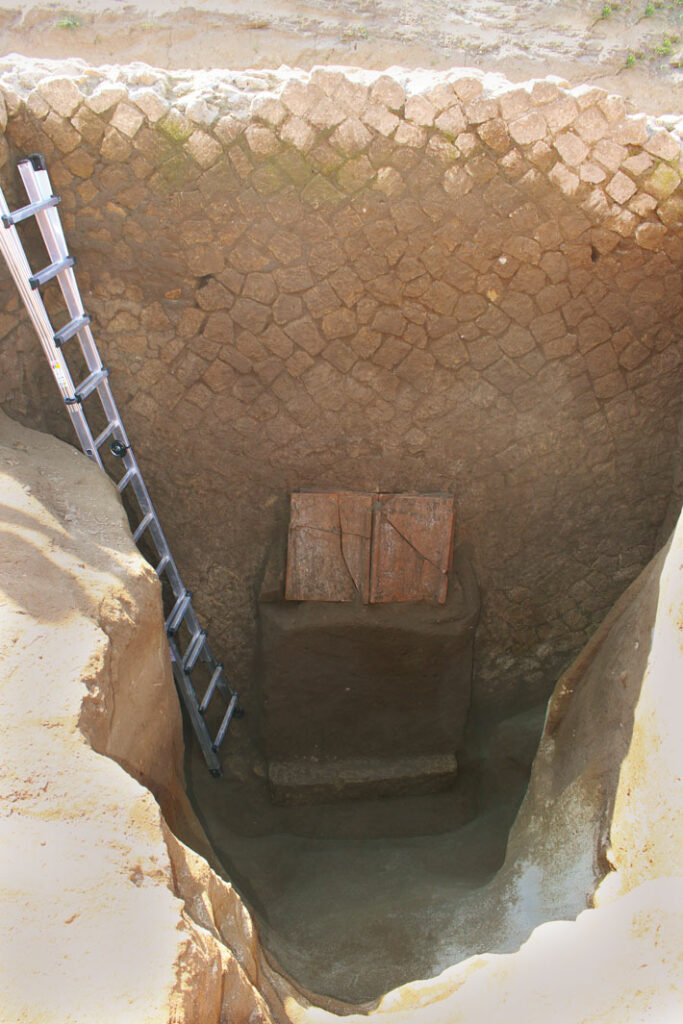
For the ancient Romans, both rich and poor, their panoply of gods and robust mythology were part of everyday life. Images in a newly discovered tomb in the city of Giugliano, just outside Naples in southern Italy, suggest that at least one wealthy Roman wanted to be surrounded by gods and myths in death, too. While carrying out excavations before a new city water pipe was laid, archaeologists uncovered an undisturbed tomb dating to between 194 B.C. and A.D. 27. “There had never been any excavations here, and it was only because I found some ceramic fragments on the surface that I decided to expand the excavation area,” says Simona Formola, head archaeologist of the Archaeological Superintendency for the Metropolitan Area of Naples. “After weeks of work, we found the sealed entrance to the tomb.”
The tomb’s walls are covered with brightly colored frescoes depicting the twelfth and final labor of the semidivine hero Hercules. Having captured or killed other monstrous beasts, Hercules, with the god Mercury as one of his guides, descended to the underworld to steal Cerberus, the three-headed guard dog, and bring the creature to the surface. The frescoes also contain images of two ichthyocentaurs—a sea god with a human head and torso, a horse’s lower body, and the tail of a fish—accompanied by winged cupids. Inside the tomb, Formola found three painted couches, an altar with libation vessels, and the deceased’s remains. “No similar discovery has previously been made in this area, and usually all that is found are modest burials in earthen pits, almost all of which have already been disturbed,” she says. “This discovery is exceptional due to the monumentality of the tomb and its intact state.”
